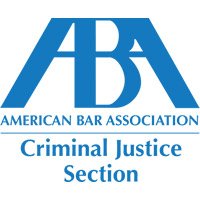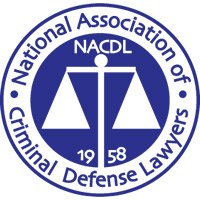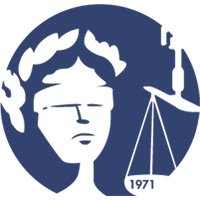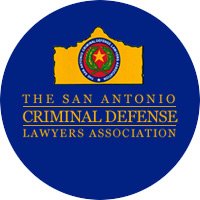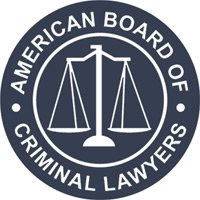HEARSAY
HEARSAY EXCEPTIONS
801(c) A STATEMENT IS NOT HEARSAY IF IT IS NOT OFFERED FOR THE TRUTH OF THE MATTERS ASSERTED
U.S. v. Ebens, 800 F.2d 1422 (6th Cir. 1986) [defense offered tape recordings of interviews between prosecutor and state witnesses as evidence of “coaching”, not for truth of contents of tapes, and therefore it was not hearsay];
U.S. v. Davis, 673 F. Supp. 252 (N.D. Ill. 1987) [taped statements made by a government informant in the presence of the defendant constituted non-hearsay verbal acts].
801(d) STATEMENTS WHICH ARE NOT HEARSAY:
Prior Statements of witnesses are not hearsay and come in as “substantive evidence” where the declarant testifies, is subject to cross-examination and the statement is:
- Inconsistent with the witness’ testimony and the prior statement was given under oath and subject to the penalty of perjury, S. v. Castro-Ayon, 537 F.2d 1055 (9th Cir. 1976) [“penalty of perjury” requirement satisfied by interrogation under oath by border patrol], Mississippi v. Parker, 514 S.2d 767 (Miss. 1986) [prior courtroom testimony is admissible], or
- Consistent with the witness’ testimony and offered to rebut a charge of “recent fabrication” or improper influence or motive, or
- Identification of person after perceiving him. S. v. Cueto, 611 F.2d 1056 (5th Cir. 1980); U.S. v. Lewis, 565 F.2d 1248, 1251 (2d Cir.), cert. denied 435 U.S. 973 (1978) [no requirement of same be under oath].
However, when offered against a criminal defendant, such out-of- court identification must comply with Constitutional requirements under the Sixth and Fifth Amendments regarding right to counsel and freedom from unnecessarily suggestive procedures.
See U.S. v. Wade, 388 U.S. 218, (1967);
Stovall v. Denno, 388 U.S. 293 (1967);
Biggers v. Tennessee, 390 U.S. 404 (1968);
Kirby v. Illinois, 406 U.S. 682 (1972);
U.S. v. Ash, 413 U.S. 300 (1973).
But see U.S. v. Owens, 484 U.S. 554, 108 S.Ct. 838, 98 L.Ed.2d 951 (1987) [since victim made an identification after perceiving the defendant and was available for cross at trial, thus meeting the technical requirements of 801(d)(1)(C), it was irrelevant that cross was not successful in light of that same victim’s post identification amnesia. The court found that the Sixth Amendment was satisfied if the defendant has a full and fair opportunity to bring out the witness’ bad memory and other facts tending to discredit his testimony].
ADMISSION OF A PARTY OPPONENT [FED. R. EVID. RULE 801(d)(2)]
A statement offered against a party is admissible where it is:
- his own statement,
U.S. v. Ordonez, 722 F.2d 530, 534 (9th Cir. 1983) [ledgers alleged to contain evidence of possession of cocaine and the testimony interpreting them were not admissions of the defendant where a Government handwriting expert could not identify the author].
- a statement he has adopted, or manifested a belief in its truth, or
U.S. v. Rios Ruiz, 579 F.2d 670 (1st Cir. 1978) [use of police report and grand jury testimony by police officer – held as personal admissions properly admitted against officer];
U.S. v. Echeverry, 759 F.2d 1451 (9th Cir.1985) [drug agent’s testimony concerning alleged co-conspirator’s statements regarding knowledge and involvement with South American cocaine trade were not hearsay when offered as necessary background information rather than for the truth of the matter asserted];
U.S. v. Yarns, 811 F.2d 454 (8th Cir. 1987) [statement to an accomplice-turned- State’s-witness that he was a “good liar” held admissible].
See also U.S. v. Kattar, 840 F.2d 118 (1st Cir. 1988) [ the federal government, including the Justice Dept., is a party opponent which, by submitting documents to other federal courts, “manifested an adoption of belief in” the truth of same and therefore the documents were non- hearsay, admissible].
The court made it very clear that reliance on a particular position by the government, was not merely an admission by the individual prosecutor offering the same previously: “We agree with Justice (then Judge) Stevens that the assertions made by the government in a formal prosecution…’establish the position of the United States and not merely the views of its agents who participate there.'” U.S. v. Katter, 840 F.2d 118 (1st Cir. 1988).
- statement by person authorized by him to make a statement concerning the subject, or
- statement by his “agent” or “employee”, or
- statement by a fellow co-conspirator, made during the course and in furtherance of the
- statements by “agents” or “employees”:
Rule 801(d)(2)(D) provides that a statement offered against a party which is made “by his agent or employee concerning a matter within the scope of his agency or employment, made during the existence of the relationship” is vicariously admissible against the principal. U.S. v. Buttram, 568 F.2d 770 (3d Cir.), cert. denied, 435 U.S. 995 (1978); Gagliardi v. Flint, 564 F.2d 112, 116 (3d Cir.), cert. denied, 438 U.S. 904; Callon Petroleum Co. v. Big Chief Drilling Co., 548 F.2d 1174, 1174 n.2 (5th Cir. 1977); People v. Torres, 262 Cal.Rptr. 323 (3d Dist. 1989) [an agency relationship found to be existing between defendant and his interpreter so as to admit interpreter’s statements as admissions by defendant].
Otherwise statements by a government agent relating to any matter within the scope of his employment and during the existence of his employment should be admissible against the government and even in other unrelated trials, and whether authorized or not.
See U.S. v. American Tel. & Tel Co., 498 F. Supp. 353 (D.D.C. 1980); U.S. v. Pena, 527 F.2d 1356 (5th Cir.), cert. denied, 426 U.S. 949 [court reversed decision as to whether ‘informant’ constituted government agent or employee for purposes of vicarious admission under Rule 801 (d)(2)(D), since statement sought to be admitted was allegedly made several months after the transaction there in question and therefore was held not to be within the scope of the agency] .
Contra U.S. v. Kampiles, 609 F.2d 1233, 1246 (7th Cir.), cert. denied, 446 U.S. 954 (1980) [“in a criminal prosecution government employees are not considered servants of a party opposed for the purposes of the Admissions Rule” of 801(d)(2)(D)].
Furthermore, such statement under 801(d)(2)(D) would be admissible without regard to whether the declarant is available to testify or not.
See B-W Acceptance Corp v. Porter, 568 F.2d 1179, 1183 (5th Cir. 1978);
Rule v. International Association of Bridge, Structural and Ornamental Ironworkers, 568 F.2d 558, 569 n.17 (8th Cir. 1977).
Accordingly, the requirements of FED. R. EVID. Rule 804(b)(1) that in order to admit former testimony of “a witness at another hearing of the same or a different proceeding” the party offering same must show:
- The declarant is not available,
- The “party against whom the testimony is now offered … had an opportunity and similar motive to develop the testimony by direct, cross, or redirect examination” is not B-W Acceptance Corp v. Porter, 568 F.2d at 1183; Rule v. International Association of Bridge, Structural and Ornamental Ironworkers, 568 F.2d 558, 569 n.17.
Statement by a co-conspirator of a party during the course and in furtherance of the conspiracy.
STATEMENTS OF CO-CONSPIRATORS
A statement made by a co-conspirator in the furtherance of the conspiracy has long been recognized by the Federal Judiciary as an exception to the “Hearsay Rule”, and to the Sixth Amendment right of confrontation as well. Clune v. U.S., 159 U.S. 590, 593 (1895); Padget v. U.S., 283 F.2d 244 (5th Cir. 1960); Cwach v. U.S., 212 F.2d 520 (8th Cir. 1954).
This judicial rule has now been codified in FED. R. EVID. Rule 801(d)(2)(E) which provides in pertinent part that:
“A statement is not hearsay if …the statement is offered against the party and is … a statement by a co-conspirator of a party during the course and in furtherance of the conspiracy.” [See discussion at Rule 104 (E) herein].
See U.S. v. Scott, 730 F.2d 143, 148 (4th Cir. 1984), cert. denied, 105 S.Ct. 572 [must bear sufficient indicia of reliability to satisfy the Confrontation Clause];
U.S. v. Chindawongse, 771 F.2d 840 (4th Cir. 1985); U.S. v. Aguirre Aguirre, 716 F.2d 253 (5th Cir. 1983) [the testimony of a witness concerning criminal acts prior to dates of the conspiracy charged by the indictment where such evidence was relevant and admissible for proving the existence and purpose of the conspiracy];
U.S. v. Gotti, 644 F. Supp. 370 (E.D.N.Y. 1986) [recitation by family members of past activities was “in furtherance” of conspiracy as they were designed to apprise conspirator of progress and induce his assistance]; U.S. v. Foster, 711 F.2d 871 (9th Cir. 1983) [a statement after a conspiratorial goal is accomplished is not “during the course” of the conspiracy, where there was no intent to elicit continuing cooperation by the statement].
But see U.S. v. H&M, Inc., 562 F. Supp. 651 (M.D.Pa. 1983) [defendant need not have been a member of a conspiracy at the time the statement was made]; U.S. v. Carroll, 860 F.2d 500 (1st Cir. 1988) [the acquittal of an alleged co-conspirator did not retroactively invalidate a ruling that his statements were admissible against the defendant; the district court applied the correct test in finding that the statements were admissible, and the acquittal did not change the result].
For standard under which such statements are admissible; see discussion regarding Rule 104 Supra.
NOT WITHIN CO-CONSPIRATOR EXCEPTION
See U.S. v. Arroyo, 805 F.2d 589 (5th Cir. 1986) [statement not within furtherance of conspiracy, not curable once admitted and not harmless error; new trial required].
HEARSAY EXCEPTIONS
Availability of Declarant Immaterial [FED. R. EVID. Rule 803]
The following are not excluded by the hearsay rule, even though the declarant is available as a witness:
- Present sense impression,
Harris v. State, 736 S.W.2d 166 (Tex.App.- Houston [14th Dist.] 1987) [testimony by a burglary victim that a neighbor came to the door and announced that she had just seen the defendant running with the victim’s radio was admissible as a present sense impression],
- Excited utterance,
- Then existing mental, emotional, or physical condition,
But see U.S. v. Rodriguez-Pando, 841 F.2d 1014 (10th Cir. 1988) [defendant’s tape recorded statements to police claiming coercion were not admissible as tape offered to prove truth of the matter asserted was hearsay and lacked guarantees of trustworthiness necessary to fit under state of mind exception].
- Statements for purposes of medical diagnosis or treatment,
- Recorded recollection (concerning a matter about which a witness once had knowledge but now has insufficient recollection),
- Records of regular conducted activity:
- made at or near the time,
- from information transmitted by a person with knowledge,
- kept in course of regularly conducted business activity,
- regular practice to make the report or entry,
- by testimony of “custodian” or other qualified
Unless the source of information or method of accumulation indicate a lack of trustworthiness.
See U.S. v. Long, 578 F.2d 579 (5th Cir.), 439 U.S. 915 (1978) [holding that N.C.I.C. “rap sheets” are not admissible as business records under FED. R. EVID. Rule 803(b)];
U.S. v. Shiver, 414 F.2nd 461, 464 (5th Cir. 1969) [stating police reports not admissible as business records];
U.S. v. Johnson, 413 F.2d 1396 (5th Cir. 1969).
See also U.S. v. Robinson, 700 F.2d 205 (5th Cir. 1983)[notes of county purchasing agent are inadmissible because it was not part of his official function to take and keep such notes];
U.S. v. Ordonez, 722 F.2d 530, 534 (9th Cir. 1983) [a suspected narcotics ledger was inadmissible as a business record because no foundation was laid regarding the custodian or other witness with knowledge of the circumstances];
Aldridge v. State, 732 SW2d 395 (Tex.App.-Dallas, 1987) [admission of jail fingerprint cards for record purposes only];
U.S. v. Puente, 826 F.2d 1415 (5th Cir. 1987) [entries of license place numbers by customs officers as vehicles enter the U.S. were admissible as public records because the matters observed were not at the scene of a crime or criminal activity].
- Absence of such “business” record,
- Public records and reports,
- Records of vital statistics,
- Absence of public record or entry,
- Records of religious organizations,
- Marriage, baptismal and similar certificates,
- Family records,
- Records of documents affecting an interest in property,
- Statements in documents affecting an interest in property,
- Statements in ancient documents,
- Market reports, commercial publications,
- Learned treatises,
- Reputation concerning personal or family history,
- Reputation concerning boundaries or general history,
- Reputation as to character,
- Judgment of previous conviction,
- Judgment as to personal, family or general history, or boundaries,
- Other exceptions,
Catch-all, admitting hearsay within the trial courts discretion where such statement: exceptions),
- has equivalent circumstantial guarantees of trustworthiness (as other
- is offered as evidence of material facts,
- is more probative on the point for which it is offered than any other evidence
which proponent can reasonably produce,
- is made known to the adverse party:
- in advance of the trial or hearing with opportunity to object,
- particulars of statement,
- name and address of declarant.
See Ricciardi v. Children’s Hospital Medical Center, 811 F.2d 18 (1st Cir. 1987) [unknown source of information suggesting untrustworthiness of note precludes it from being admissible under recorded recollection, record of regular conducted activity or the residual exception to hearsay rule].
DECLARANT UNAVAILABLE [FED. R. EVID. RULE 804]
As to exceptions to the hearsay rule applicable where the declarant is “unavailable”, the definition of “unavailable” includes situations where the declarant:
- is exempted by ruling of the court on ground of privilege,
- persists in refusing to testify despite court order,
- testifies to lack of memory,
- is unable to be present or to testify at the hearing because of death or physical or mental illness, or
- is absent for the hearing and the proponent of his statement has been unable to produce his attendance by process or other reasonable means, Barker v. Page, 390 U.S. 719, 723-24 (1968) [requiring every reasonable effort to obtain live testimony].
The following are not excluded by the hearsay rule, where the declarant is “unavailable”.
- Former testimony of witness at another hearing of the same or different proceeding statements against penal interest,
…if the party against whom the testimony is now offered …had an opportunity and similar motive to develop the testimony by direct or cross- examination.
- Statement under belief of impending death,
- Statement against interest at the time of making is so far contrary to declarant’s:
- pecuniary,
- proprietary,
- civil liability,
- criminal liability;
See U.S. v. Candoli, 870 F.2d 496 (9th Cir. 1989);
U.S. v. Lieberman, 637 F.2d 95, 103 (2d Cir. 1980);
U.S. v. Mock, 640 F.2d 629, 631-2 (5th Cir. 1981);
Cf. U.S. v. L’Hoste, 640 F.2d 693, 695-96 (5th Cir. 1981) [statement not admissible as statement against penal interest where made after guilty plea and at civil proceedings to further his pecuniary interest, such as reasonable man would not have made statement unless he believed it to be true].
U.S. v. Sarmiento-Perez, 667 F.2d 1239 (5th Cir. 1980), cert. denied, 103 S.Ct. 77;
U.S. v. Gonzalez, 559 F.2d 1271, 1273 (5th Cir. 1977).
The same requirements apply to statements against penal interest regardless of whether offered by prosecution or defense. Lyons v. U.S., 514 A.2d 423 (D.C. App. 1986).
- Statement of personal or family history, and
- Catch-all, admitting hearsay within the trial courts discretion where such statement:
- has equivalent circumstantial guarantees of trustworthiness (as other exceptions),
- is offered as evidence of material fact,
- is more probative on the point for which it is offered than any other evidence which proponent can reasonably produce,
- is made known to the adverse party:
- in advance of the trial or hearing with opportunity to object,
- particulars of statement,
- name and address of
See, e.g., Brown v. Dugger, 831 F.2d 1547 (11th Cir. 1987) [ the requirements of the residual exception were not met where a declarant who is not shown unavailable and whose statement is not shown reliable, such a witness must be produced to afford the defendant the right to compulsory process regardless of the fact that the defendant was present and silent at the time the incriminating statement was made].
Additionally, even if evidence meets one of the enumerated exceptions to the hearsay rule, same may be rendered inadmissible.
The Advisory Committee notes also expressly recognize that the exemptions from the exceptions to the hearsay rule set out in Rule 801, 803 and 804, “Do not purport to deal with questions of the right of confrontation”. FED. R. EVID. Advisory Comm. Notes, Rule 804(b)(3); FED. R. EVID. Rule 801. See also Proposed Rules of Evidence , 56 F.R.D. 183 (1972); U.S. v. Williams, 431 F.2d 1168 (10th Cir. 1972), aff’d, 477 F.2d 1285 (en banc), cert. denied, 405 U.S. 954.


